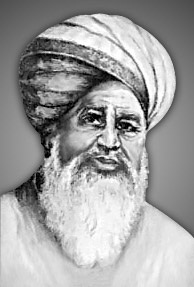
Dhaka Division is an administrative division of Bangladesh. Dhaka serves as the capital city of the Dhaka Division, the Dhaka District and Bangladesh. The division remains a population magnet, covers an area of 20,508.8 km2 with a population in excess of 44 million, it is one of the fastest growing populous administrative division of the world, growing at 1.94% rate since prior count, compared with national average of 1.22%. However, national figures may include data skewing expatriation of male labor force as gender ratio is skewed towards females.

Manikganj District is a district in central Bangladesh and part of the Dhaka Division. It was established in 1845 as a subdivision of Faridpur District, then in 1953, it was transferred to Dhaka District for administrative purposes. Finally in 1984, Manikganj was declared a full district.

Faridpur District is a district in south-central Bangladesh. It is a part of the Dhaka Division. It is bounded by the Padma River to the northeast. The district was named for its headquarters, the city of Faridpur, which itself was named for Farīd-ud-Dīn Masʿūd, a 13th-century Sufi saint. A separate district was created by severing Dhaka district in 1786 and was called Dacca Jelalpur. A municipality was established in 1869. Historically, the town was known as Fatehabad. It was also called Haveli Mahal Fatehabad.

Madaripur District is a district in central Bangladesh and a part of the Dhaka Division.

Shariatpur District is a district in the Dhaka Division of central Bangladesh. Shariatpur is named after the Islamic revivalist, Haji Shariatullah.

Dhaka (Dacca) is a modern megacity with origins dating from 500 BC to 200 BC. The history of Dhaka region begins with the existence of urbanised settlements that were ruled by Gupta Empire, Gauda Kingdom, Pala Empire and Chandra dynasty before passing to the control of the Sena dynasty in the 10th century CE. After the reign of Sena dynasty, the region was ruled by the Hindu Deva dynasty of Bikrampur.

Shariatpur Sadar is an upazila of Shariatpur District in the Division of Dhaka, Bangladesh. Shariatpur Thana was converted into an upazila in 1984. It is the subdistrict where the district headquarters, Shariatpur town, is located.

Haji Shariatullah was a prominent religious leader and Islamic scholar from Bengal in the eastern subcontinent, who is best known as the founder of the Faraizi movement. In 1884, the Shariatpur District was formed and named after him.

Madaripur is a town in Dhaka division in south-central Bangladesh. It is the headquarters of Madaripur District. It is named for Shah Madar, a Sufi saint who spread Islam in the region.

Bengali Muslims are adherents of Islam who ethnically, linguistically and genealogically identify as Bengalis. Comprising over 70% of the global Bengali population, they are the second-largest ethnic group among Muslims after Arabs. Bengali Muslims make up the majority of Bangladesh's citizens, and are the largest minority in the Indian states of West Bengal, Tripura and Assam.
Muḥsin ad-Dīn Aḥmad (1819–1862), better known by his nickname Dudu Miyān, was a leader of the Faraizi Movement in Bengal. He played an active role in the Indian Rebellion of 1857.
Talukdar is a historic occupational title in South Asia which is now used as a surname. Notable people with the surname include:
Abul Hafez Mohsen Uddin Ahmad, also known as Pir Dudu Miah, was a Member of the 4th National Assembly of Pakistan as a representative of East Pakistan.

The Greater Jessore region predominantly includes the districts of Jessore, Jhenaidah, Narail and Magura in Bangladesh, as well as the Bangaon subdivision of India. Nestled close to the Sundarbans, the region experienced human settlement early on. It served as the capital city of the Samatata realm and passed through several Buddhist and Hindu kingdoms such as the Palas and Senas. Jessore was ruled by Khan Jahan Ali of Khalifatabad, under the Muslim Sultanate of Bengal, who is credited with establishing the Qasbah of Murali and urbanising the region through advancements in transportation and civilization. Jessore later came to be ruled by various kings such as Pratapaditya and became familiar to contemporary European travellers as Chandecan before being annexed to the Mughal Empire in the seventeenth century. By 1757, the British East India Company had dominated and started to establish themselves in the region. British rule lasted up until 1947, with Jessore coming under the Provisional Government of Bangladesh from 1971 onwards.
Karāmat ʿAlī Jaunpūrī, born as Muḥammad ʿAlī Jaunpūrī, was a nineteenth-century Indian Muslim social reformer and founder of the Taiyuni movement. He played a major role in propagating to the masses of Bengal and Assam via public sermons, and wrote over forty books. Syed Ameer Ali is one of his notable students.

Ḥāfiẓ Aḥmad Jaunpūrī was an Indian Muslim scholar, religious preacher and social worker. As the son and successor of Karamat Ali Jaunpuri, he led the Taiyuni reformist movement in Bengal.

ʿAbd al-Awwal Jaunpūrī was an Indian Muslim scholar, religious preacher, educationist, poet and author. Described by Muhammad Mojlum Khan as one of the "most gifted and outstanding" of Karamat Ali Jaunpuri's many children, he displayed an important role leading his father's founded Taiyuni reformist movement in Bengal.

Nesaruddin Ahmad was a Bengali Islamic scholar, spiritual reformer, educationist and writer. He was the main disciple of Furfura Sharif's Mohammad Abu Bakr Siddique in eastern Bengal. Ahmad was the inaugural Pir of Sarsina, having founded the Sarsina Darbar Sharif and Darussunnat Kamil Madrasa in 1915, one of the largest Islamic institutions in South Bengal and the first major alia madrasah after Calcutta. Ahmad was among the leading Islamic leaders in colonial Barisal, and his influence extended across Bengal. The Nesarabad Upazila of Bangladesh has been named after him.
Awa Khaled Rashid Uddin Ahmad was a prominent Islamic scholar, politician, social reformer, and spiritual leader; he was also known as Pir Badshah Miah. A fourth-generation descendant of Haji Shariatullah, he assumed responsibility for the Bahadurpur sufi lodge and the Faraizi movement after his father's death in 1906.














